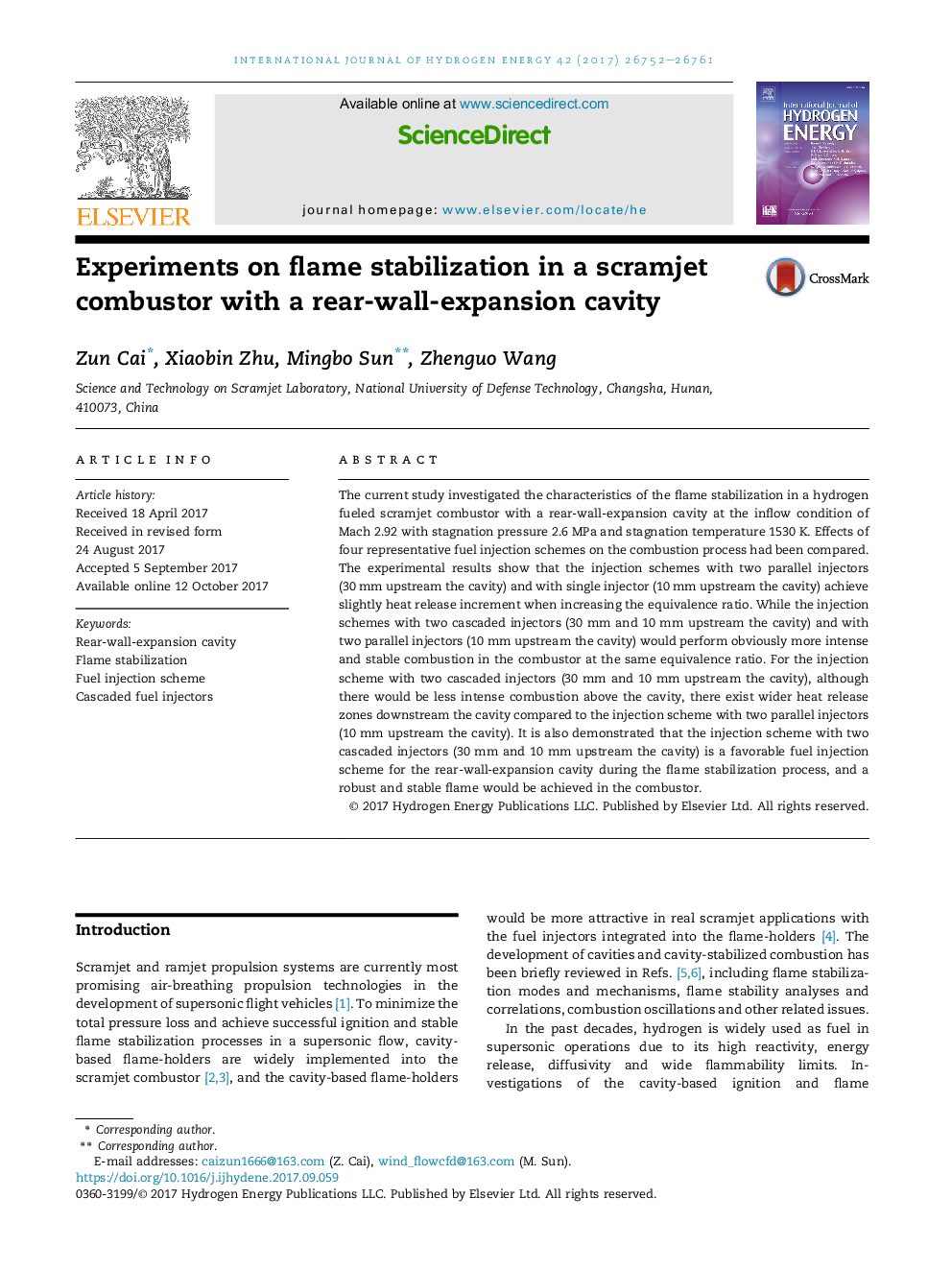| Article ID | Journal | Published Year | Pages | File Type |
|---|---|---|---|---|
| 7709793 | International Journal of Hydrogen Energy | 2017 | 10 Pages |
Abstract
The current study investigated the characteristics of the flame stabilization in a hydrogen fueled scramjet combustor with a rear-wall-expansion cavity at the inflow condition of Mach 2.92 with stagnation pressure 2.6Â MPa and stagnation temperature 1530Â K. Effects of four representative fuel injection schemes on the combustion process had been compared. The experimental results show that the injection schemes with two parallel injectors (30Â mm upstream the cavity) and with single injector (10Â mm upstream the cavity) achieve slightly heat release increment when increasing the equivalence ratio. While the injection schemes with two cascaded injectors (30Â mm and 10Â mm upstream the cavity) and with two parallel injectors (10Â mm upstream the cavity) would perform obviously more intense and stable combustion in the combustor at the same equivalence ratio. For the injection scheme with two cascaded injectors (30Â mm and 10Â mm upstream the cavity), although there would be less intense combustion above the cavity, there exist wider heat release zones downstream the cavity compared to the injection scheme with two parallel injectors (10Â mm upstream the cavity). It is also demonstrated that the injection scheme with two cascaded injectors (30Â mm and 10Â mm upstream the cavity) is a favorable fuel injection scheme for the rear-wall-expansion cavity during the flame stabilization process, and a robust and stable flame would be achieved in the combustor.
Keywords
Related Topics
Physical Sciences and Engineering
Chemistry
Electrochemistry
Authors
Zun Cai, Xiaobin Zhu, Mingbo Sun, Zhenguo Wang,
